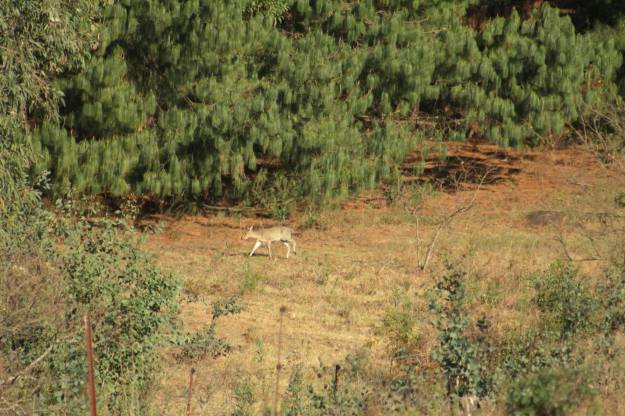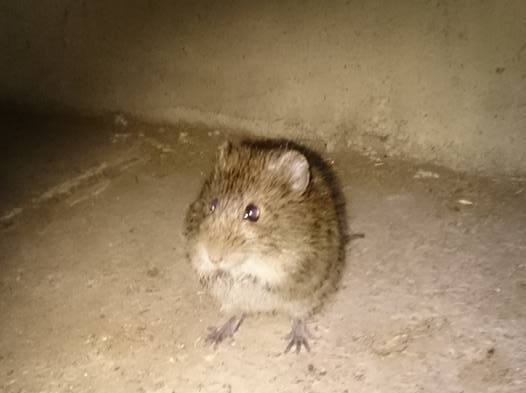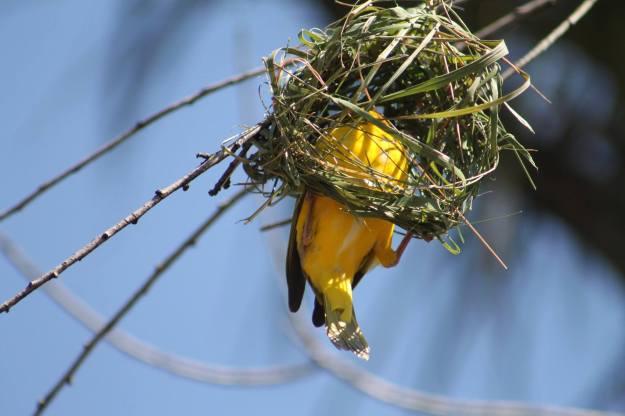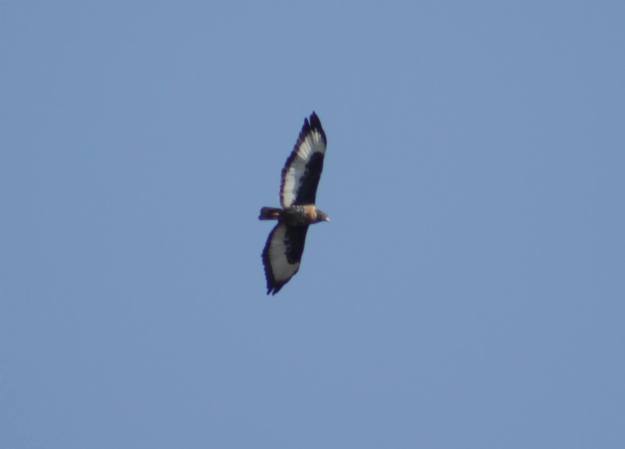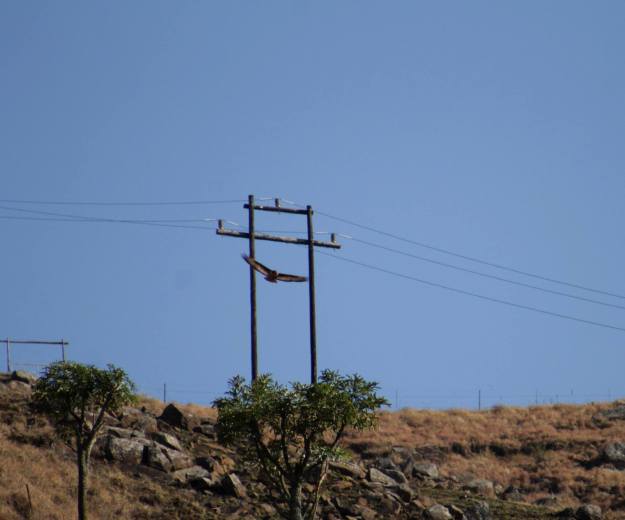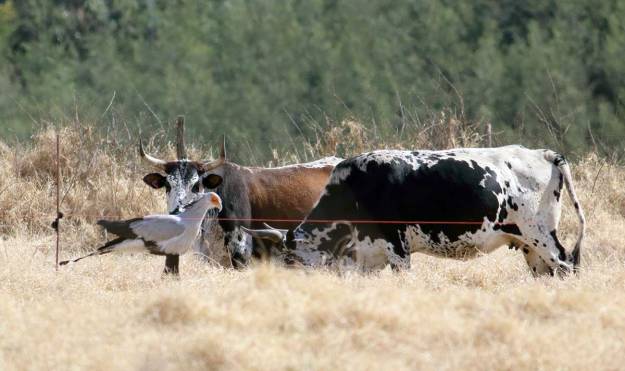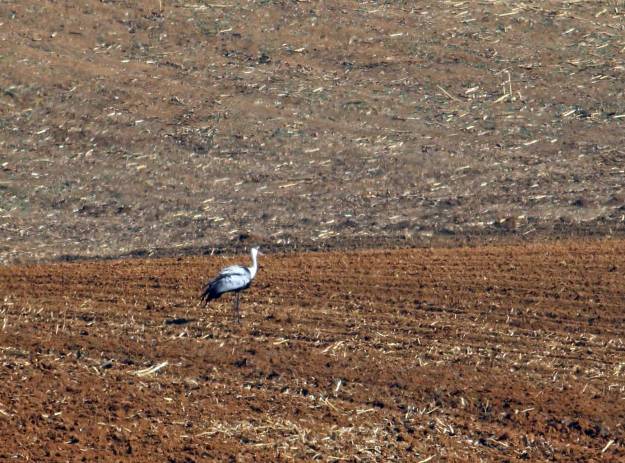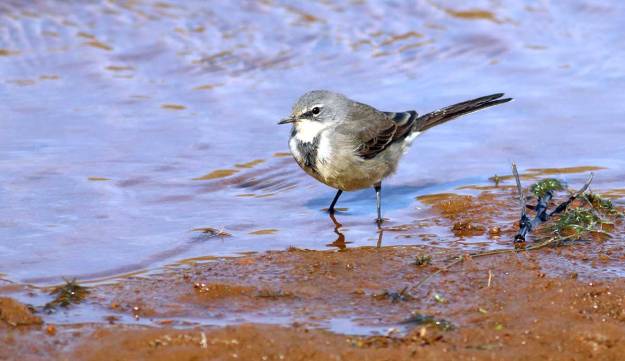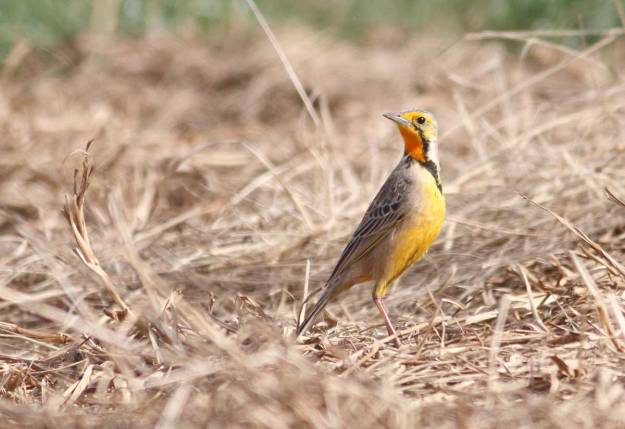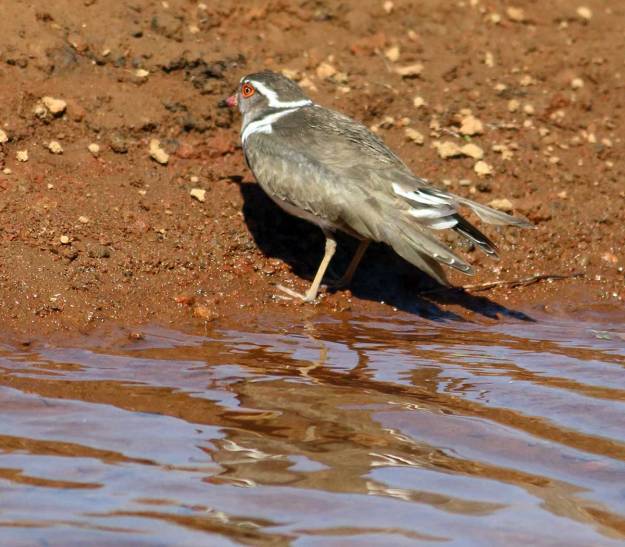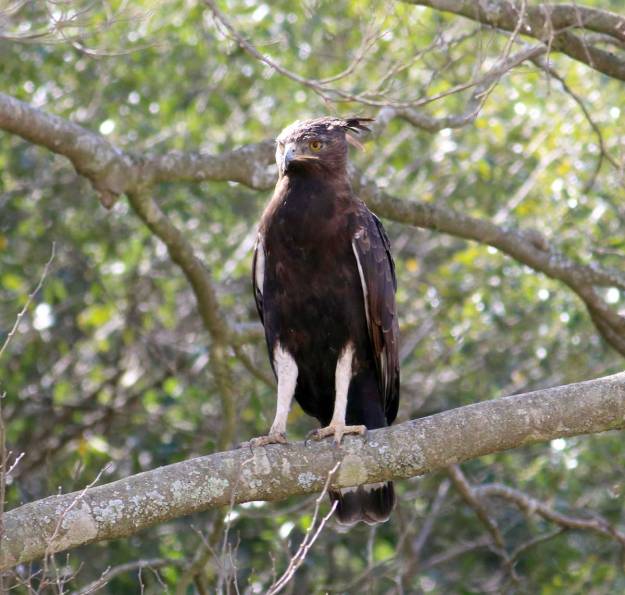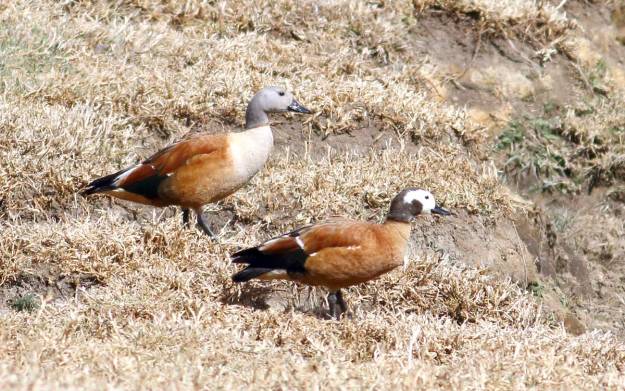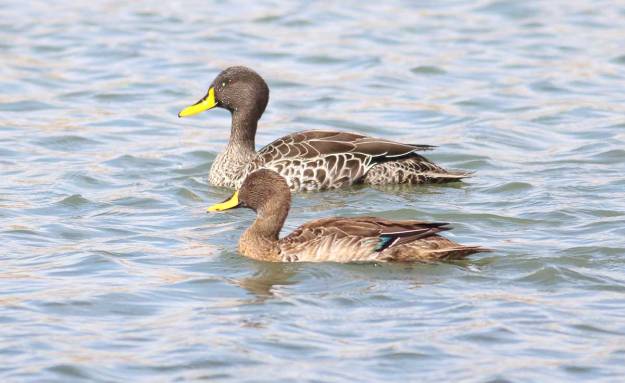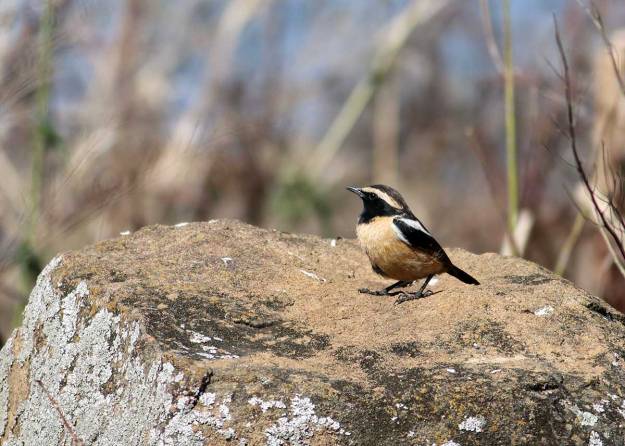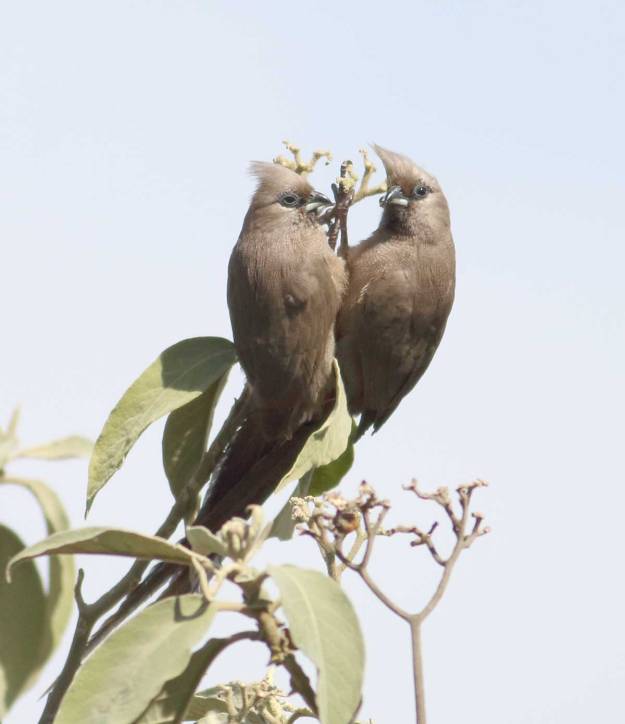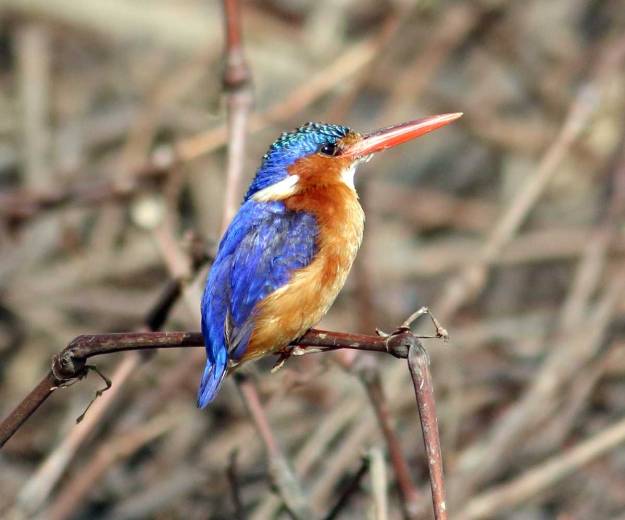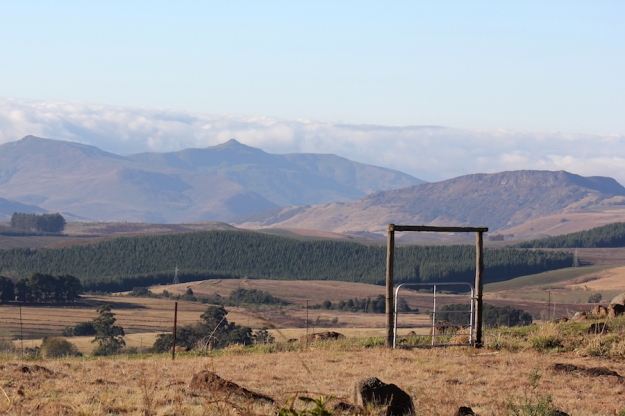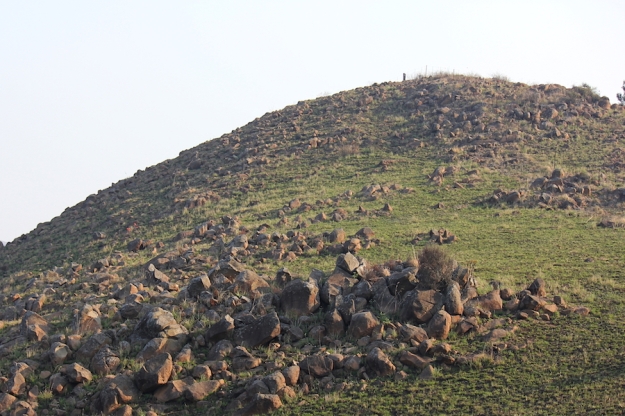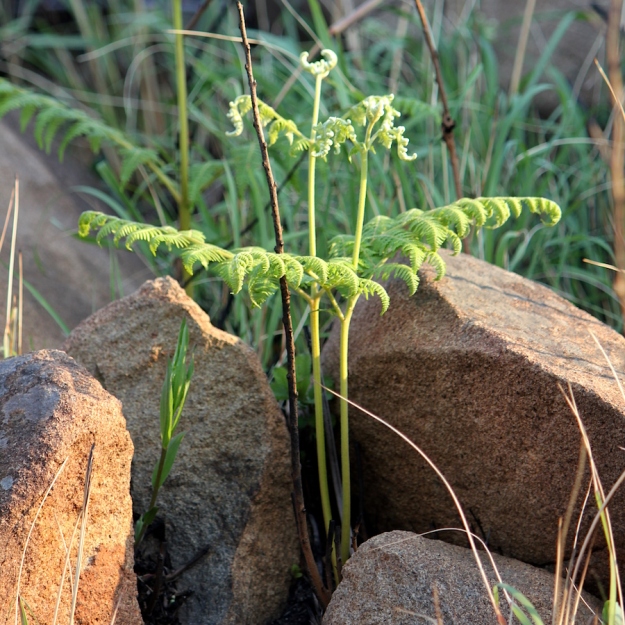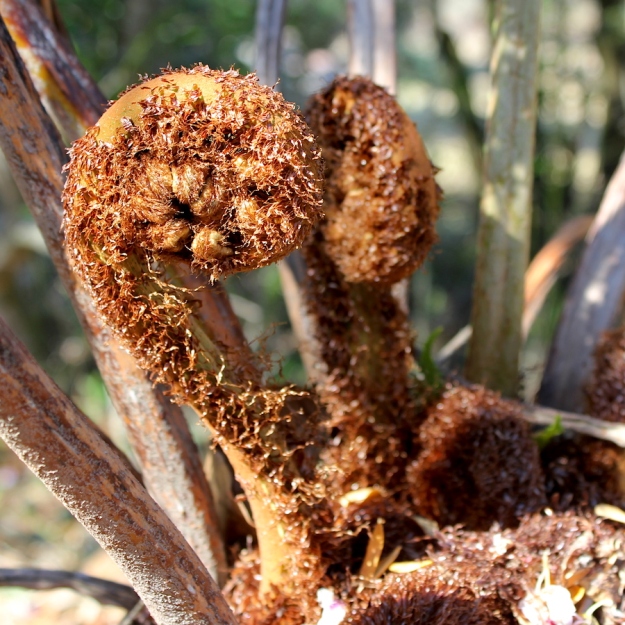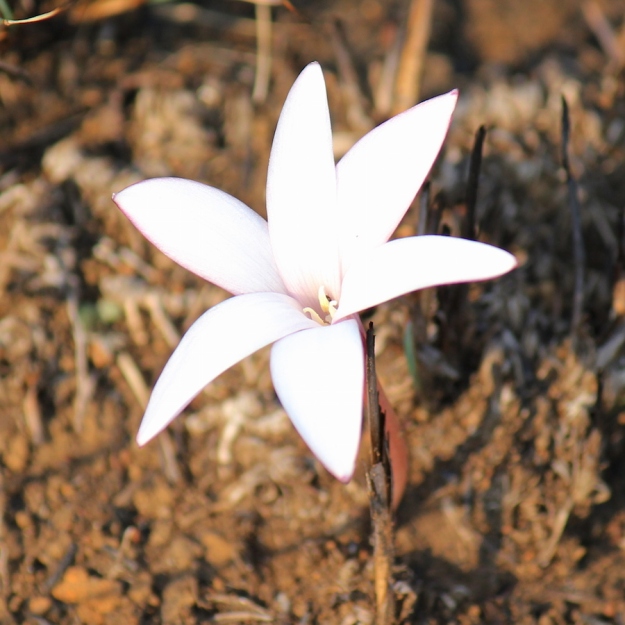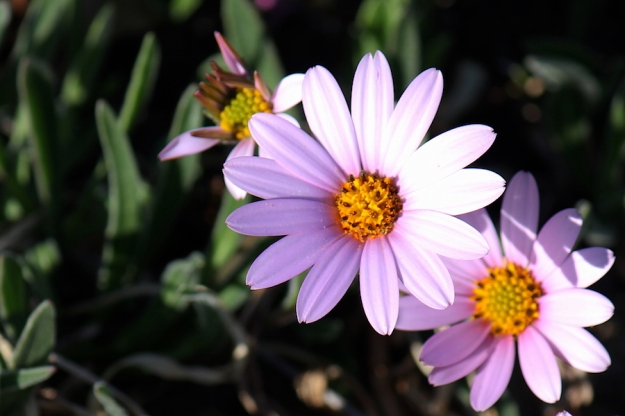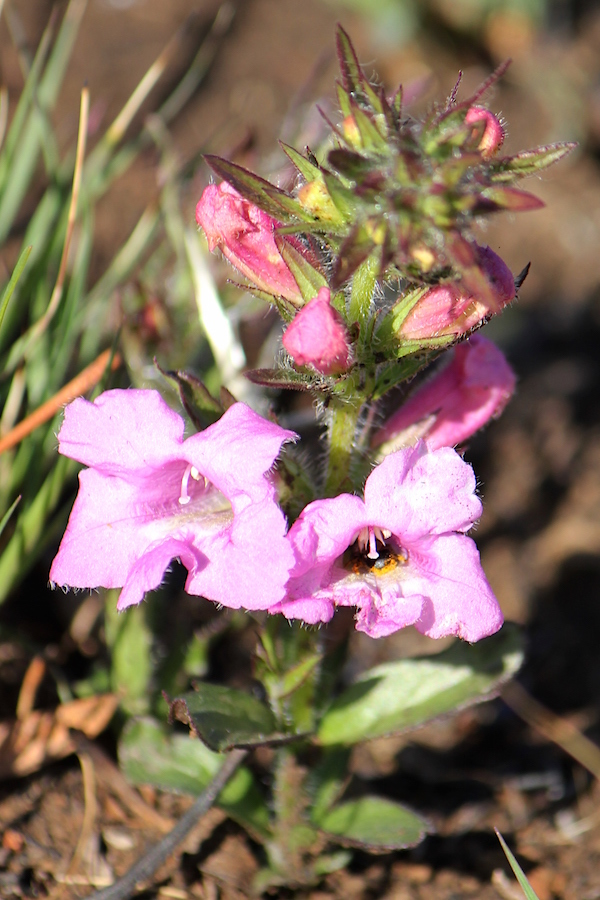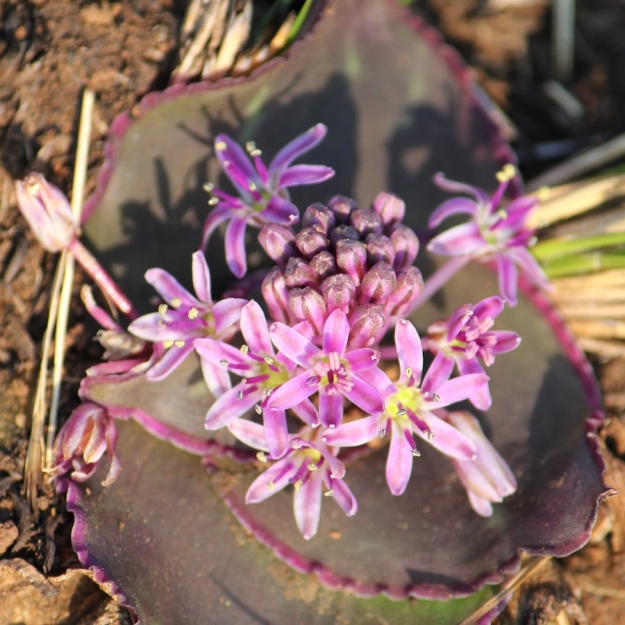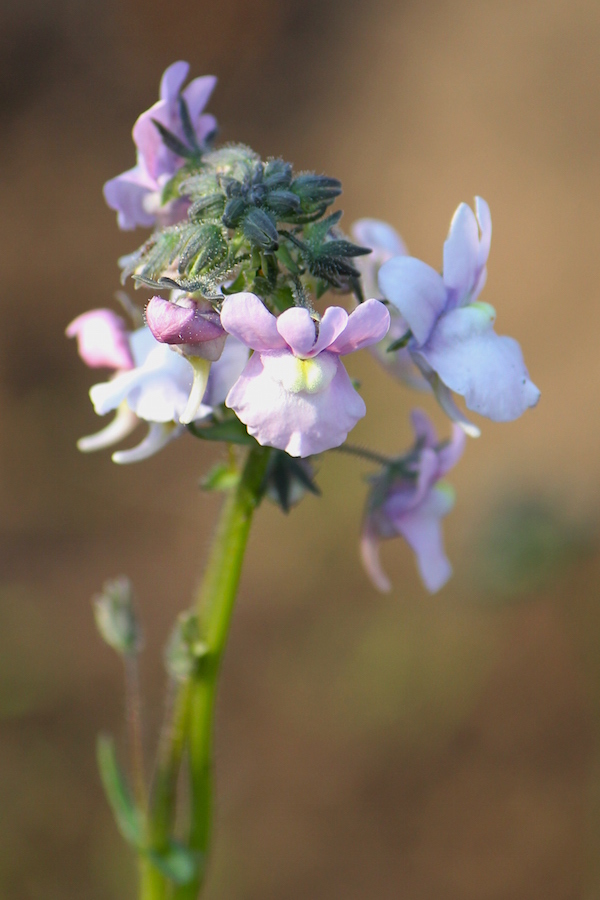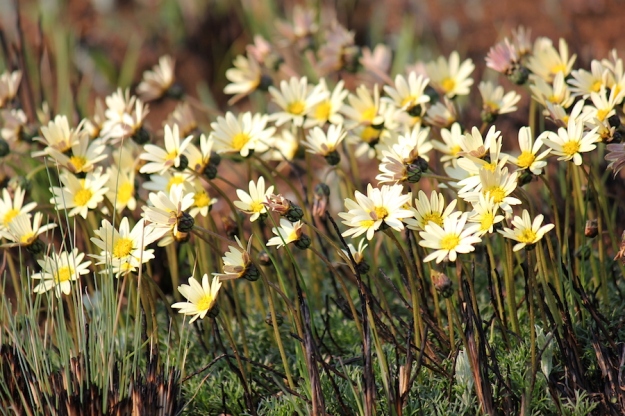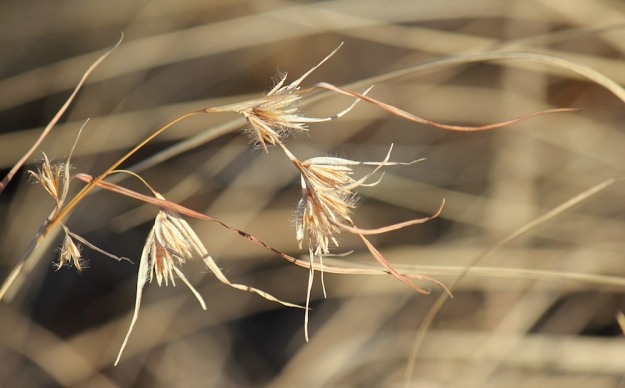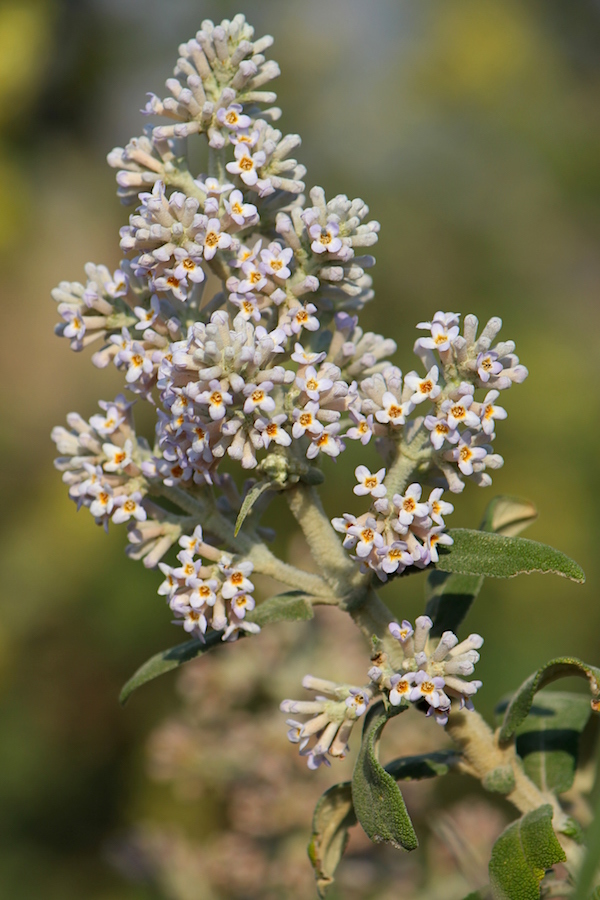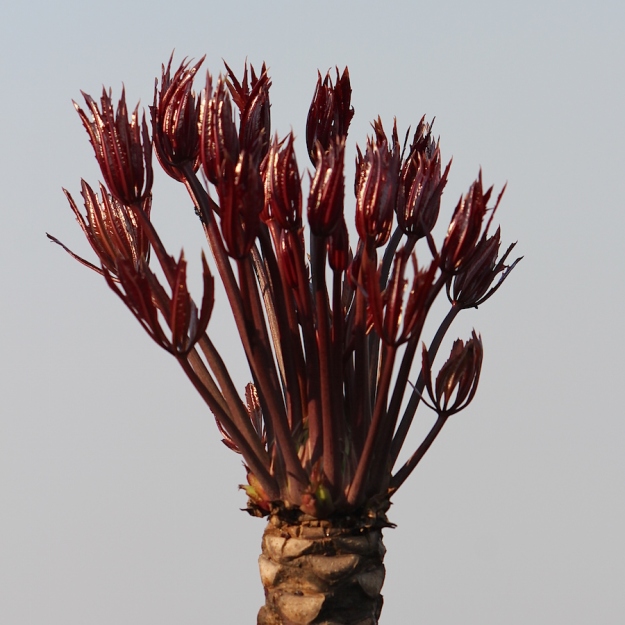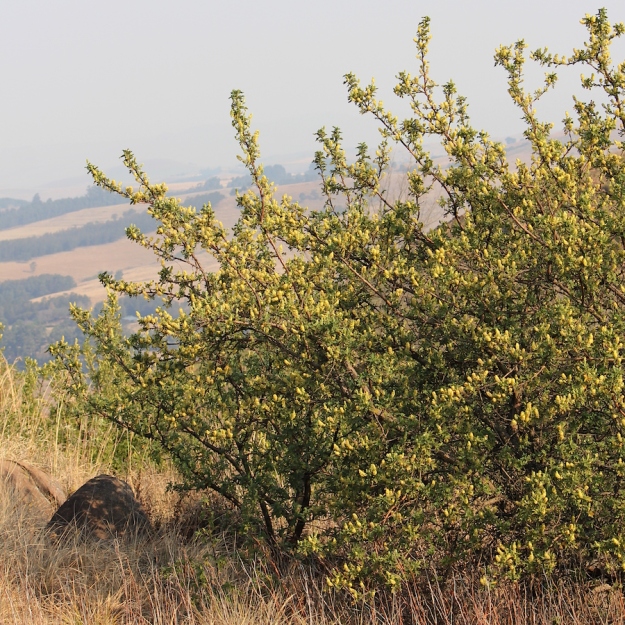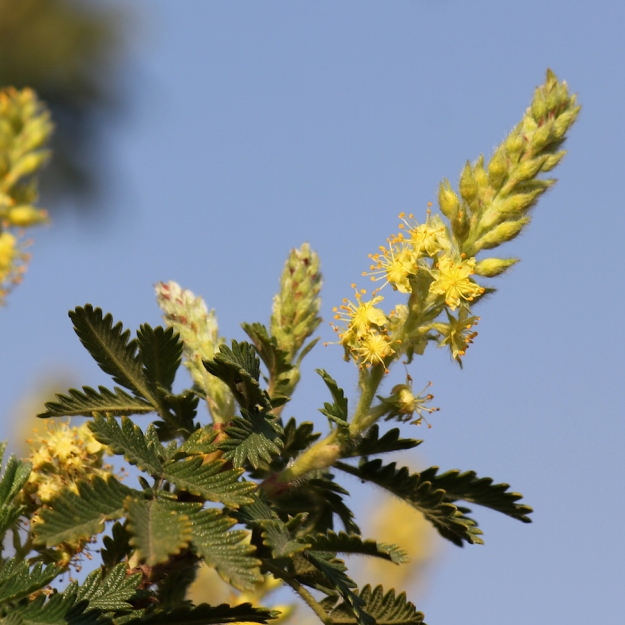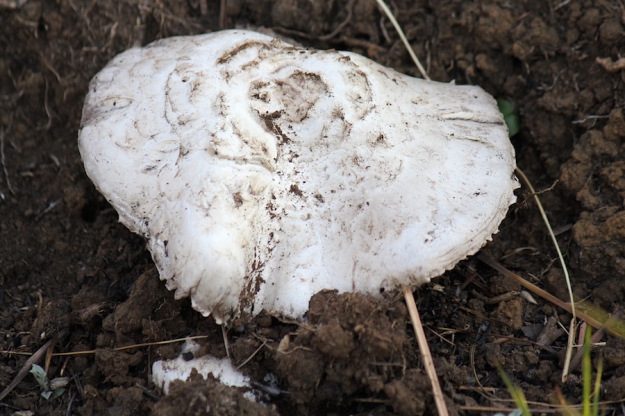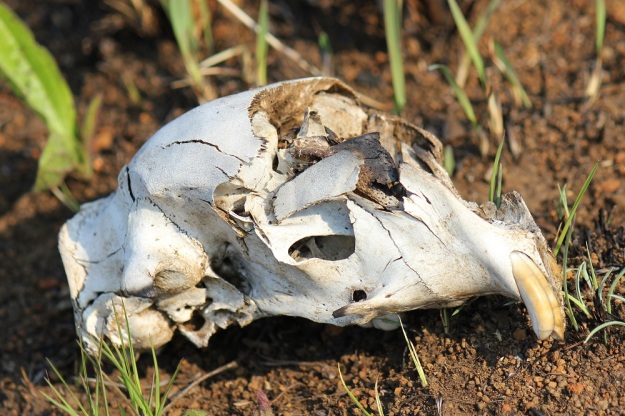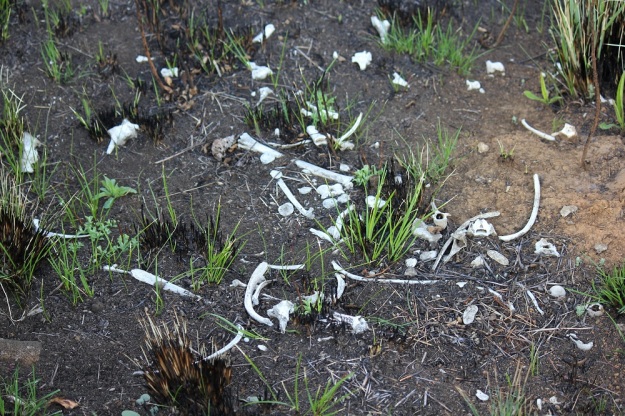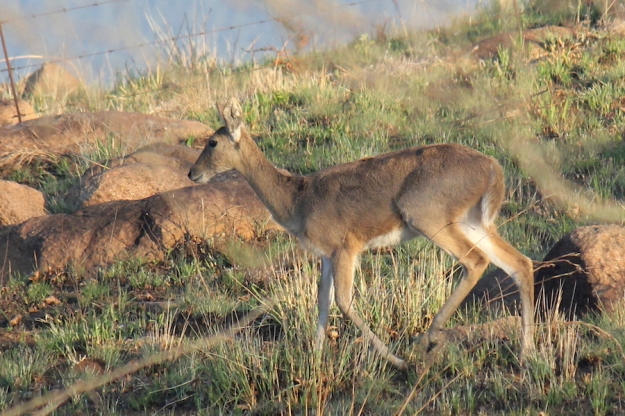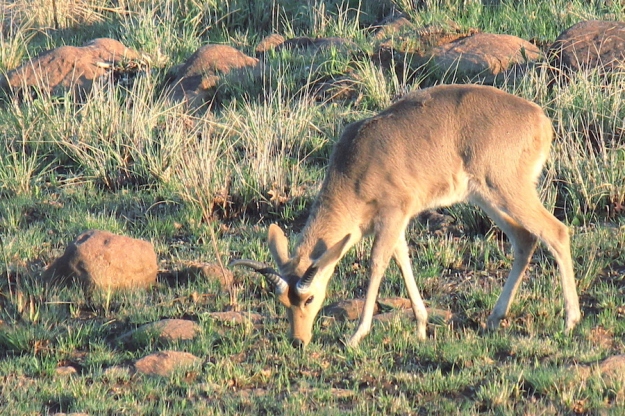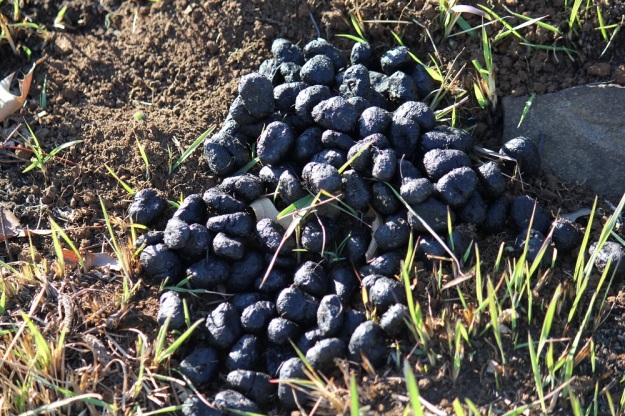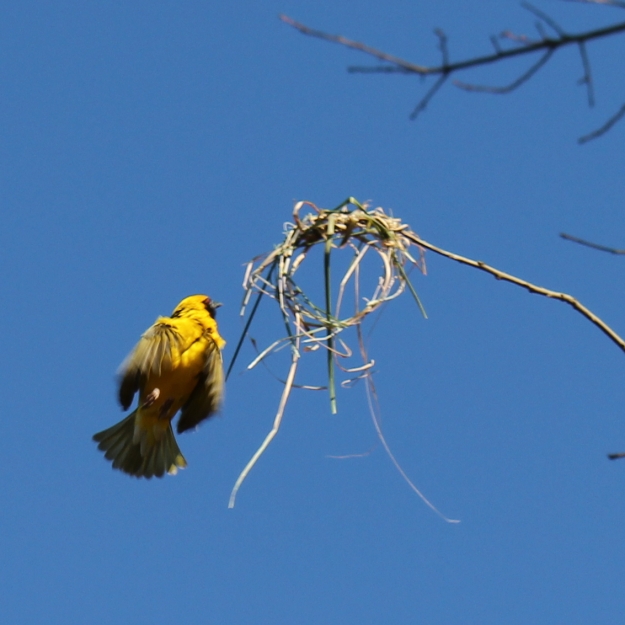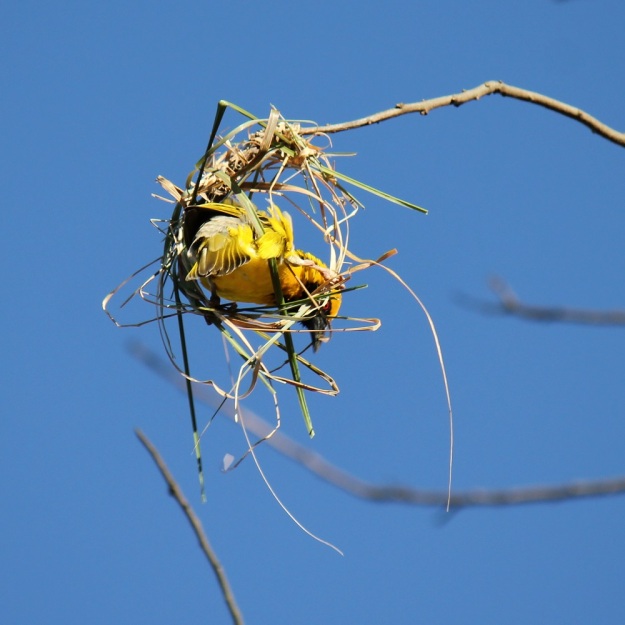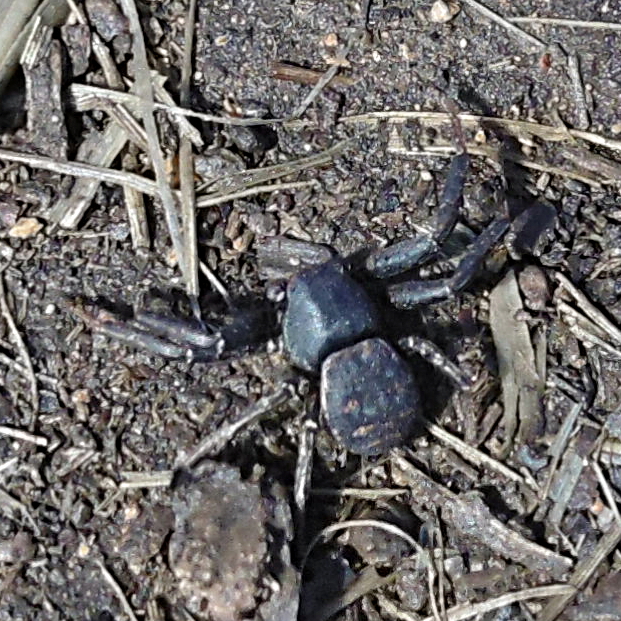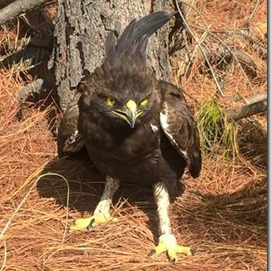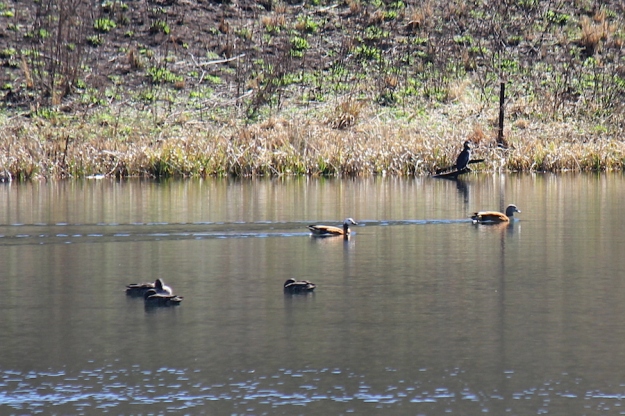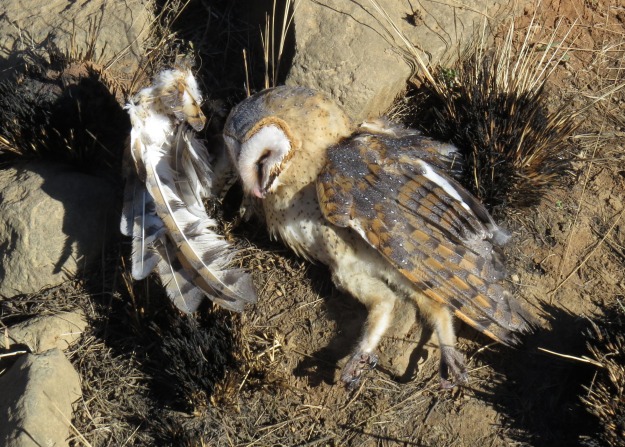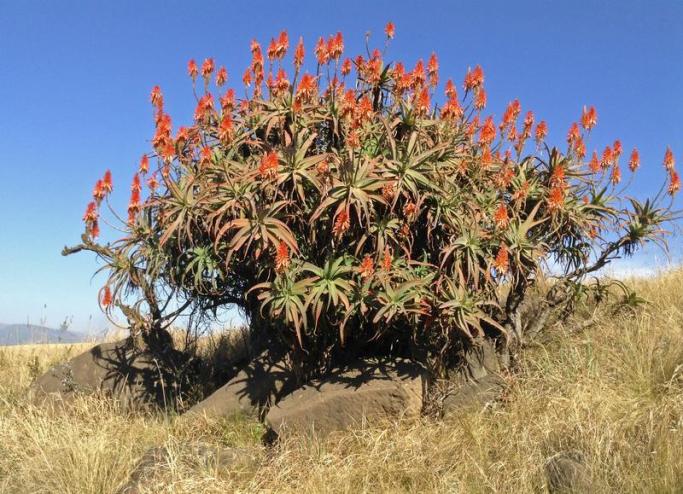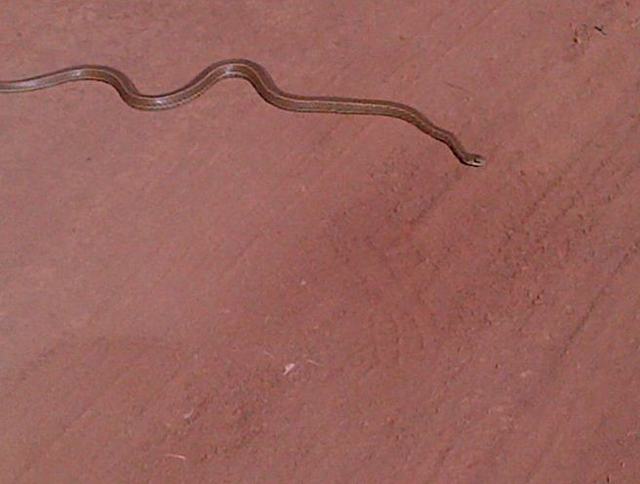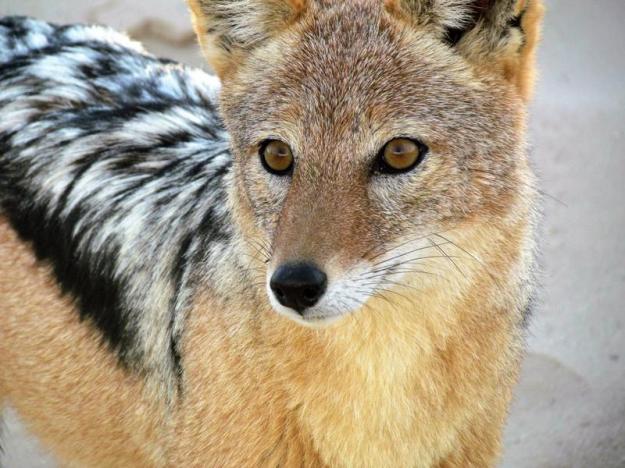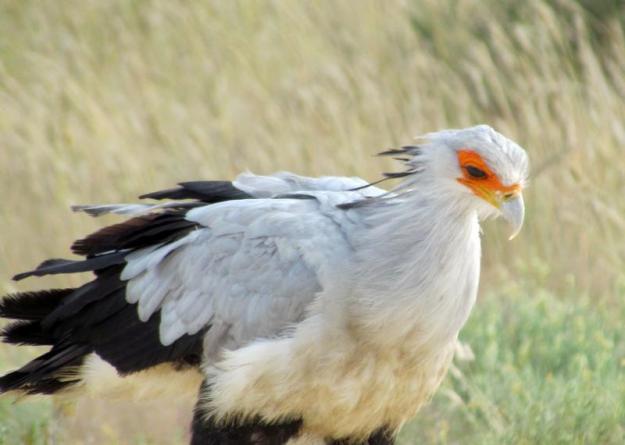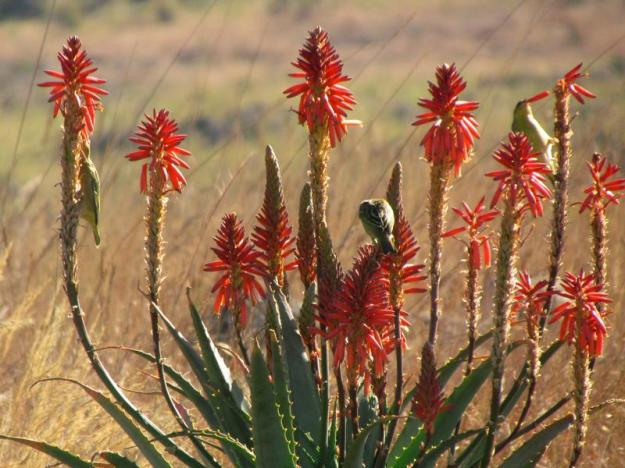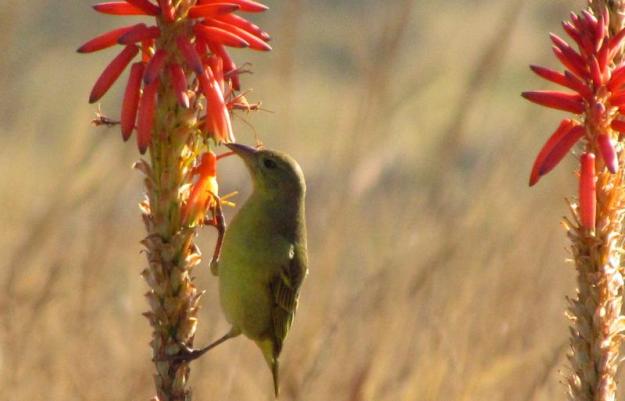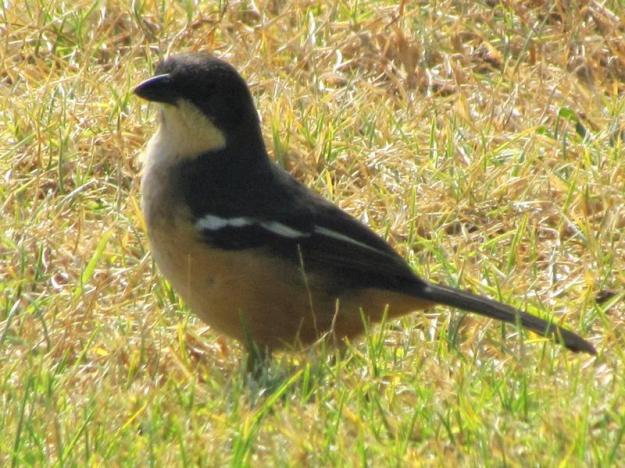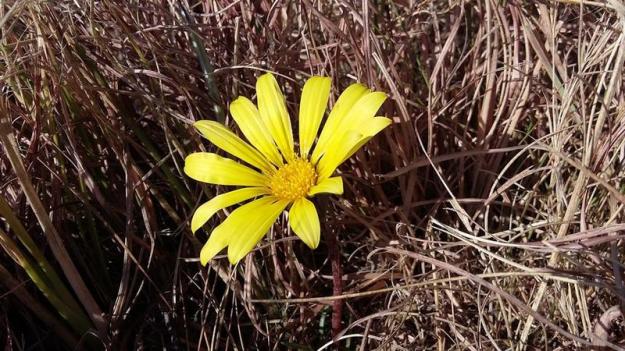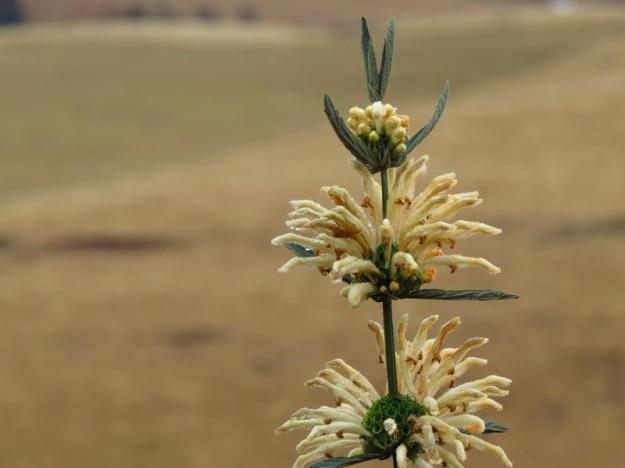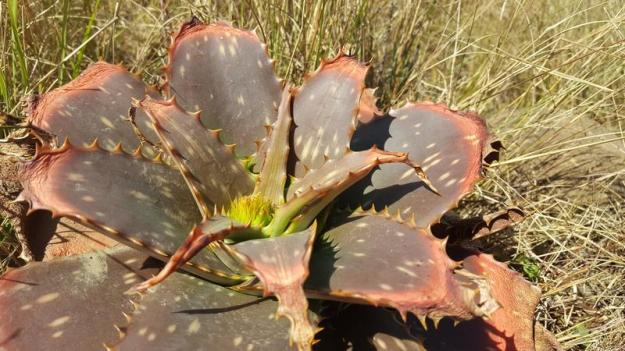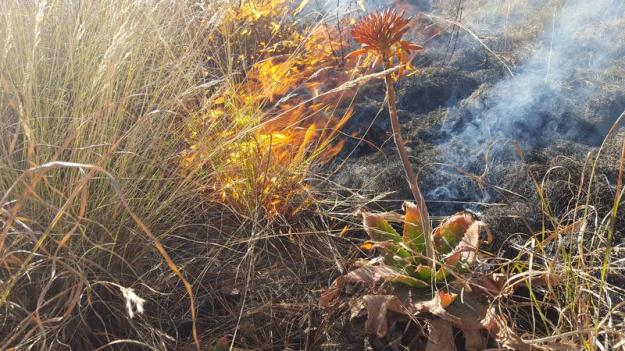Christeen Grant of “Sitamani”:
August has been very dry, despite a few very early in the season thunderstorms, not much rain and that quickly dried up in the hot winds that followed them. There have been mainly very hazy conditions, creating stunning sunrises and sunsets.

Just the small amounts of moisture has started the slow season change to summer, grass is greening, the earlier spring flowers are starting to appear, with them insects and birds re-growing summer plumage.

A first sighting / exciting find for me was two small groups of Urginea capitata. These small plants of the Hyancinthaceae Family, are only about 15cms tall, topped with dense inflorescenses of star shaped white flowers. Apparently they are used as a good luck charm by traditional healers.

Urginea capitata

Urginea capitata
The Common Soap Aloes, Aloe maculata are bright orange splashes of colour on the rocky hillside. Anemone fanninii wave newly opened white flags on the grassy slopes.

Common Soap Aloe – Aloe maculata

Anemone fanninii
The morning after a light rain shower Green-lipped Fire Lilies Cyrtanthus tuckii as well as fragrant, dainty Apodolirion buchananii started appearing.

Cyrtanthus tuckii

Cyrtanthus tuckii

Apodolirion buchananii

Apodolirion buchananii
Tritonia lineata, Tulbaghia leucantha, Dimorphotheca jucunda, Nemesia caerulea, Gazania krebsiana, Gerbera ambigua and Ledebouria ovatifolia, one with Bee fly, Bombomyia discoidea.
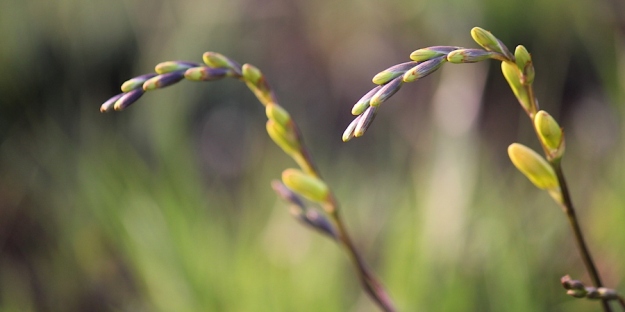
Tritonia lineata buds

Tritonia lineata

Tulbaghia leucantha

Dimorphotheca jucunda

Nemesia caerulea

Gazania krebsiana

Gerbera ambigua

Ledebouria ovatifolia with Bee fly, Bombomyia discoidea
Other insects spotted on or near flowers was a Lunate Ladybird Cheilomenes distigma on a Berkheya setifera bud, other Ladybirds and an interesting Milkweed Bug, Spilostethus sp.. A Crab spider, Thomisidae sp on Tritonia lineata, a small spider on the window and a delightful frosted spider web in the grass were also seen.

Ladybird

Ladybird

Lunate Ladybird Cheilomenes distigma on Berkheya setifera bud

Milkweed Bug Spilostethus sp

Milkweed Bug Spilostethus sp

Spider Crab spider Thomisidae sp on Tritonia lineata

Spider

Spiders web festooned with frost
Two regular early birds to the birdbath on the verandah, before the sun is up properly and the Cape White-eyes take over, are the Black-backed Puffbacks and the Cape Robin-Chats.

Black-backed Puffback

Cape Robin-Chat
On several early mornings I have seen a small group of four Mountain Reedbuck. Duiker are frequently active in the mornings and evenings, they ‘found’ the violets and within a few days all the flowers and leaves has been munched, leaving stalks and droppings behind. Common Reedbuck are also seen regularly. The eerie call of Black-backed Jackal is heard most evenings. A delight are the small Cape Serotine bat, Pipistrellus capensis bats that flit by at dusk. (Illustration: C. Grant, from Bats of Southern Africa: P.J. Taylor, pub University of Natal Press 2000)

Cape serotine bat Pipistrellus capensis
Rob and Celia Speirs of “The Rockeries”:
Six Crowned Hornbills in the pecan nut trees in the back garden.
Nigel and Tracy Murray of “Trelyon“:
One Southern Ground Hornbill flying over behind the farmhouse, towards the Gum trees.
Crystelle Wilson of “Gramarye” has again produced the Annual 2016 KZN Birdlife Calendar with 13 excellent photos by Hugh Chittenden of spectacular birds, each month on a separate page, a photograph summary of which appears below.

Crystelle Wilson of “Gramarye”:
An exciting sighting this month was seeing an otter playing in the dam on The Drift one morning. I often see otter scat near the Elandsriver, but don’t get to see the animal itself.

Otter
A bird heard more often than seen, is the Lesser Swamp-Warbler. At the end of winter with reduced vegetation around the edges of dams it was easier to find.

Lesser Swamp-Warbler
So too in the forest it was easier to spot species such as the Cardinal Woodpecker.

Cardinal Woodpecker
And it was good to see a pair of Secretarybirds, near Lynre farm.

Secretarybird
The first of the migrant species of birds are beginning to return, including the Yellow-billed Kites and Dark-capped Yellow Warbler.
The SABAP2 list for the Elandshoek pentad 2935_3100: African Spoonbill,

African Spoonbill
Alpine Swift, African Black Swift, Pied Starling, African Dusky Flycatcher, South African Shelduck, Dark-capped Yellow Warbler, Spotted Eagle-owl, Sombre Greenbul, White-breasted Cormorant, Bar-throated Apalis, White-throated Swallow, Lesser Swamp-warbler, Hamerkop, Grey Heron

Grey Heron
Amethyst Sunbird, Yellow-fronted Canary, Brown-throated Martin, African Darter, Cape Wagtail, Southern Grey-headed Sparrow, Helmeted Guineafowl, Black Saw-wing, Red-billed Quelea, Pin-tailed Whydah (beginning to don its breeding colours)

Pin-tailed Whydah
Yellow-billed Kite, Green Wood-hoopoe, Cape Glossy Starling

Cape Glossy Starling
Cape Canary, Cape White-eye, Speckled Mousebird, Speckled Pigeon, Giant Kingfisher, Blacksmith Lapwing, Southern Red Bishop, Cape Weaver, Levaillant’s Cisticola, Red-knobbed Coot, Common Moorhen, Little Grebe,

Little Grebe
Bokmakierie, Reed Cormorant,

Reed Cormorant
Yellow-billed Duck, Common Fiscal, Red-capped Lark, African Pipit, Cape Longclaw, Black-headed Oriole, Southern Boubou, Black Sparrowhawk, Long-crested Eagle, African Hoopoe, Red-necked Spurfowl (which visited my garden),

Red-necked Spurfowl
Spur-winged Goose, African Rail, Egyptian Goose, Grey Crowned Crane, Black-headed Heron, Cape Turtle-dove, Red-eyed Dove, Fan-tailed Widowbird, Common Waxbill, African Firefinch, Cape Grassbird, African Stonechat, Cape Robin-chat, Dark-capped Bulbul, African Sacred Ibis,
Cape Sparrow

Cape Sparrow
Village Weaver, Cape Crow, Hadeda.

African Sacred Ibis

















